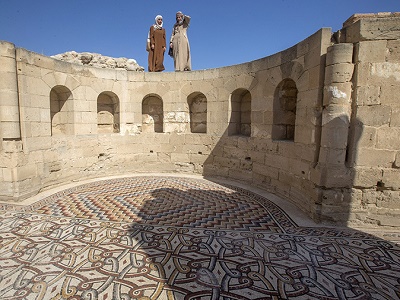
Palestinians on Thursday gave a rare glimpse of one of the Middle East’s finest mosaic floors near the occupied West Bank city of Jericho.
Dating from the eighth century AD, the floor covers about 820 square meters of the desert castle known as Hisham’s Palace, an important Islamic antiquities site just north of the ancient city.
It is made up of 38 panels bearing delicate floral and geometric designs and is one of the oldest and largest in the region to have never been moved, senior Palestinian Authority conservation official Ihab Daoud told AFP.
7th century, 827 square meter carpet mosaic uncovered for one day in Jericho https://t.co/jOSKuiuK3D pic.twitter.com/tGHQgpdnpe
— Niklas Danielsson (@Finnpal) October 20, 2016
The floor was first excavated in 1930 but left largely untouched until the early 21st century, Daoud said. In recent years it has been recovered under layers of canvas to protect it from the elements.
Now work is beginning to make the masterpiece accessible to visitors by the end of 2018, incorporating a viewing walkway and a shelter, with financing from Japan.
On Thursday the mosaic was displayed at the project launch, before being covered again to shield it from the surrounding construction work.
Middle East’s largest ancient mosaic unveiled in West Bank.
JERICHO,Umayyad Palace, 'Tree of Life' figuring war and peace.#Palestine pic.twitter.com/UDb6I9AD9A
— ourrights (@pretentiousdr) October 20, 2016
Hisham’s Palace was built during the Umayyad dynasty, which lasted from 660 to 750 AD.
Rediscovered in the 19th century, the remarkable site covering about 150 acres comprises a palace, baths and an agricultural estate was explored in detail in the 1930s.
It was then that the mosaic was uncovered beneath the dust, but like the rest of the site it was neglected during years of Jordanian, then Israeli rule, Daoud said.
One stunning part is already on show. Entitled “The Tree of Life” it shows a wild beast attacking gazelles under a fruit tree.
(The New Arab, PC)




